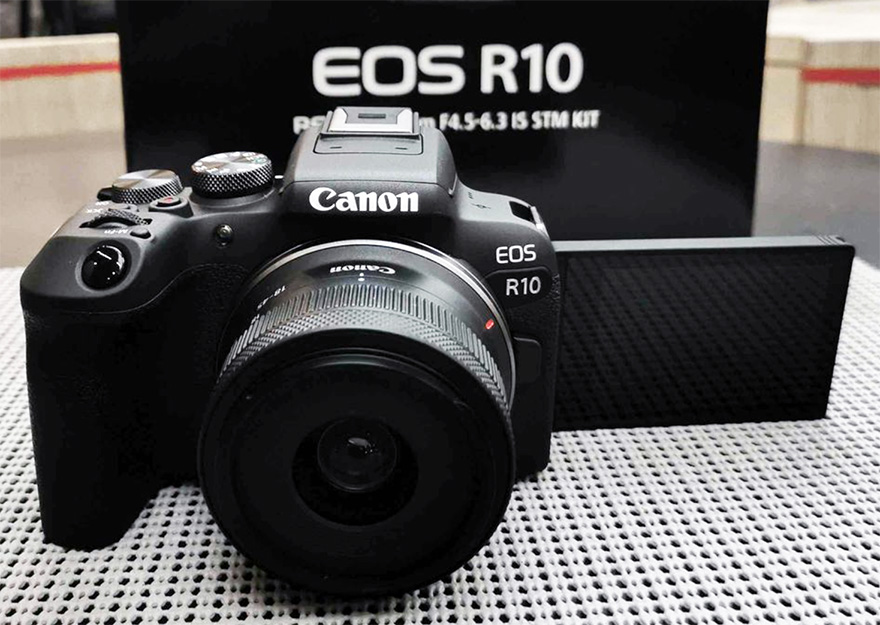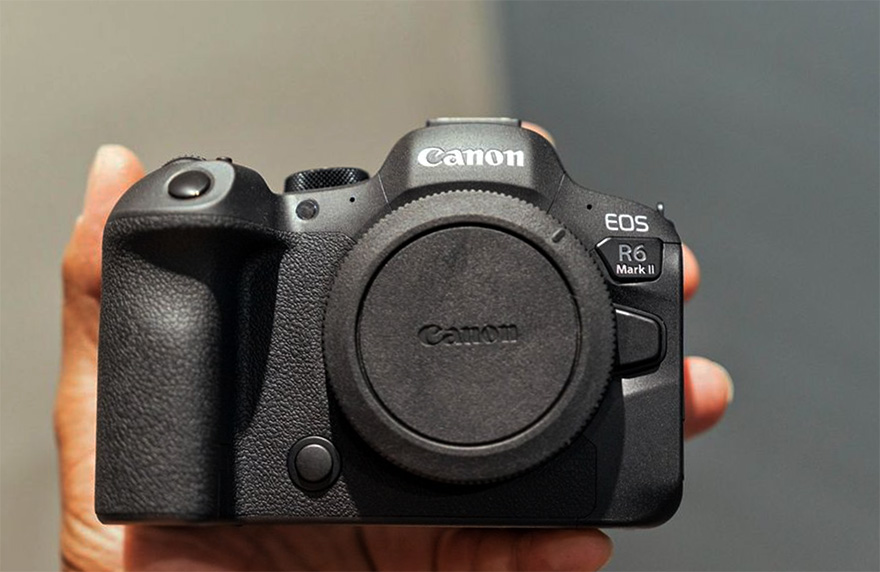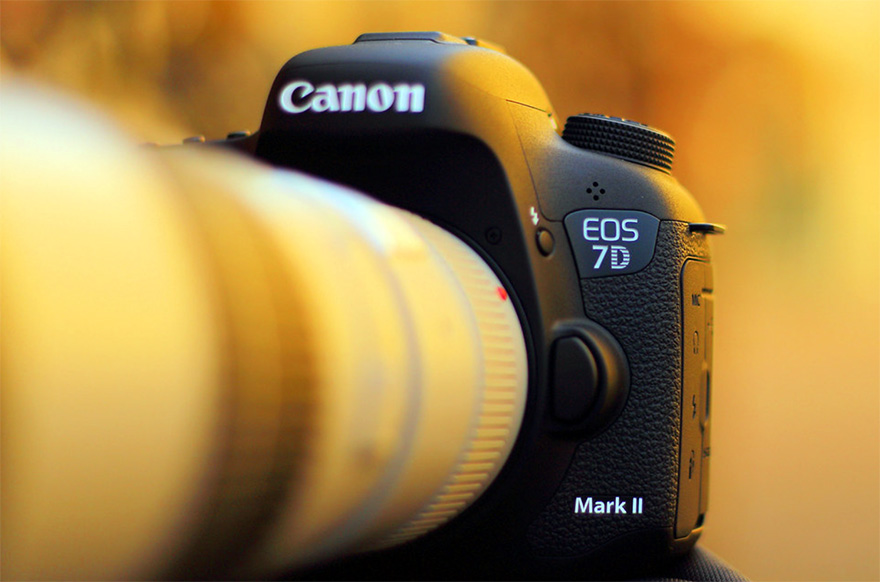Shooting sports is one of the most challenging forms of photography. It requires a lot of patience, skill, and knowledge about how to capture those moments perfectly.
You need a camera that can deliver great image quality and is fast enough to shoot at high speeds with accurate focus.
I shoot sports a lot, and I’ve tried many different cameras. I have a few favorite models that I use regularly and you should consider these great Canon cameras for sports photography.
Canon Sports Cameras
- Canon EOS R3 – Best overall Canon camera for sports
- Canon EOS R10 – Best sports photography camera for beginners
- Canon EOS-1DX Mark II – The dark horse
- Canon EOS R6 Mark II – The mini R3
- Canon 7D Mark II – Old but gold
Canon EOS R3 – Best overall

I’m sorry my trusty Canon 1D-X Mark III, you have to move over since there’s a new king in town!
The Canon EOS R3 is a new breed of Canon mirrorless camera. It combines the best qualities of the 1D-X Mark III with some extra bells and whistles that make it a better package than its predecessor.
The Canon EOS R3 is a sports camera that pushes the boundaries of mirrorless technology. It is designed for professionals capturing high-speed sports and racing events. Certainly one of the best cameras for moving objects today.
No matter if you’re capturing fast-paced indoor sports like basketball or outdoor sports like tennis, this camera will enable you to capture stunning images no matter the challenge.
The camera is also great for athlete portrait work. Since it’s so easy to use and has some great features that make the whole process easier than before.
Since the R3 has a 24MP full-frame sensor, you’ll be able to get amazing depth of field with beautiful bokeh. I’m sure you’re gonna love it when shooting portraits of athletes and other people.
The camera also has a great autofocus system that’s able to focus quickly and reliably even when conditions aren’t ideal.
Pros
- A new 24MP backlit stacked CMOS sensor
- 30 fps burst rate
- Eye Control AF (a game changer)
- 4,779 AF points
- Can shoot 6K Raw videos
- Fast focusing
- 1/8000 max shutter speed, 1/64000 max when using electronic shutter
- Blackout-free electronic viewfinder
- The EOS R3 boasts a large, high-resolution (5.7m-Dot) vari-angle touchscreen LCD, which is considered one of the best in the business
- ISO 100 to ISO 102,400 (expands to ISO 204,800)
- Up to 8-stop IS
- The Canon EOS R3’s autofocus sensitivity can focus in extremely low-light conditions, reaching as low as -7.5 EV. It can also focus in bright conditions up to +20 EV
- It offers deep buffers and swift buffer clearing, allowing for continuous shooting without any noticeable delays
- The image quality is excellent, with superb details, good dynamic range, and pleasing JPEG output
- Supports HEIF (High Efficiency Image File) format, which offers improved storage efficiency
Cons
- Some users may find the placement of the ON/OFF button less intuitive, requiring additional effort to operate
- Limited third-party lens compatibility
The one thing that I like about the EOS R3 is its Eye Control AF feature. It allows you to control the AF frame with your eye movements, which can make switching between subjects a lot faster.
Oh, and its sweet focus tracking is pretty damn impressive as well. It really sticks like glue to your subject.
Overall, if you’re getting paid to shoot sports photography and you have the money, get this camera. It’s that simple. It’s well worth the money, and it’s going to last you for years.
It’s a professional-level camera that’s going to take your sports photography to the next level.
Alternative: Canon 1D-X Mark III – The previous king of sports photography!
Canon EOS R10 – Best sports photography camera for beginners

Don’t let the affordable price tag fool you into thinking this is a sub-par camera. This is a very capable camera for sports photography, especially when you consider that it’s under $1,000 (body and kit lens included).
It’s not the ultimate camera out there, and it’s certainly not going to compete with the Canon EOS R3 or a Sony Alpha A9 II.
But for me, it might be the best budget mirrorless camera for sports.
If you have a tighter budget and need to save some money, this could be a great option for you. The Canon EOS R10 is also small and light (0.94 lbs), which makes it easier to carry around during a long football game.
It can shoot fast and its AF is pretty accurate too which can increase your keepers.
Pros
- Can shoot up to 15 frames per second (or 23 with the electronic shutter) allows you to freeze fast-paced moments effortlessly
- 24.2 MP APS-C CMOS sensor – it’s a crop sensor but a pretty powerful one
- Up to ISO 32000
- 651 focus points, which I find all accurate
- Great image quality
- Compact and lightweight
- Can shoot 4K videos
- 1/4000 max shutter speed
- The camera’s advanced animal tracking and eye detection features worked like a charm for me. It makes tracking athletes and high-speed vehicles a breeze
- The inclusion of a flip screen adds flexibility to your shooting style
- Coming from a DSLR background, I found the EOS R10’s intuitive controls allowed me to focus on composition and capturing the perfect moment without worrying about technical settings
- The EOS R10 offers excellent value for a camera that excels in sports and wildlife photography. Its high frame rate and superb image quality make it a standout option in its price range
Cons
- Battery life is on the slim side
- Viewfinder resolution (its resolution falls short when shooting subjects at maximum zoom)
- During my testing, I found that the kit lenses for the R10 lacked the sharpness I desired
I personally highly recommend the Canon EOS R10 for beginners on a budget. It offers exceptional quality photos without breaking the bank.
It’s a great option for all the sports moms out there as well who want to take better pictures of their kids on the field. It’s easy to use and the weight of the camera is not an issue at all!
Read more: Best Cameras For Sports Mom
Alternative: Canon EOS R7 – If you’re a hybrid shooter. || Canon EOS RP – If you’re mostly shooting portraits. || Canon EOS 90D – A budget sports DSLR camera.
Canon EOS-1DX Mark II – The dark horse

Having a deep passion for photography, particularly capturing tennis matches and auto car racing, I was fortunate enough to get my hands on the Canon EOS-1D X Mark II. Allow me to share my firsthand experience with this remarkable camera.
First of all, while it may be old, the Canon EOS-1DX Mark II is still one of the best cameras out there in terms of performance and features.
And recently, I also noticed that its pricing is slowly decreasing, making it more affordable for the average consumer.
It’s a professional-grade camera that can capture high-quality images with a resolution of 20 MP and can shoot up to 16 frames per second (in Live View).
It’s hefty and pairing it with my Canon EF 70-200 f/2.8L made it feel like I was carrying a brick around my neck.
Yes, it’s a very heavy camera, but it’s ergonomically designed and comfortable to hold. I didn’t feel any strain on my hands even after an entire day of shooting.
I also use a monopod to support the weight of my gear which can also be used for panning and shooting with low shutter speeds.
Also, the grip is large enough for me and the button layouts are easily accessible which allows me to change settings on the fly.
Pros
- Built like a tank. The robust and weather-sealed body of the 1D X Mark II instills confidence, making it reliable even in demanding shooting environments
- 20MP full-frame CMOS sensor
- 100-51200 (expands to 50-409600)
- Up to 16 frames per second
- 1/8000 max shutter speed
- The camera’s 61-point autofocus system, coupled with improved tracking focus, ensures accurate and swift subject tracking
- Lightning-fast shooting speed
- Its ability to record 4K video for nearly 30 minutes offers a fantastic opportunity to capture action in stunning detail
Cons
- It is disappointing that it doesn’t have built-in Wi-Fi, which would have been immensely helpful for on-the-go image transfer and sharing
- The touchscreen is responsive and useful for autofocus point selection, but unfortunately, I can’t utilize it for other operations such as image playback.
Another great thing about the Canon 1DX Mark II is its impressive battery life. It comes with a gigantic battery that can last up to 1,200 shots per charge, which is quite impressive considering it has so many features.
Overall, if you’re still into DSLRs and can’t afford the expensive Canon EOS-1DX Mark III at the moment, the older 1DX Mark II is a fantastic option.
It’s now more affordable than ever, but still very much capable of delivering excellent image quality and performance.
Remember, it’s a Canon flagship camera after all and it has won many awards including the Best Photo/Video Professional Camera at TIPA Awards.
Canon EOS R6 Mark II – The mini R3

From my perspective, the Canon EOS R6 Mark II is a mini EOS R3. It’s smaller and lighter and like the R3, the R6 Mark II is a niche camera, meaning it’s targeted at sports, events, and action photographers.
Filled with intrigue, I set out on the adventure of testing this camera on the soccer field, eagerly anticipating if it would live up to its promises.
First, don’t let its small stature fool you. The EOS R6 Mark II packs a punch, proving that great things do come in small packages. It’s compact design and comfortable grip make it a joy to handle during those fast-paced soccer games.
With the R6 Mark II, I captured shots at a speed of up to 12 frames per second (FPS) using the mechanical shutter, and an incredible 40 FPS with the electronic shutter.
Plus, its generous buffer size allows me to store nearly 80 frames without missing a beat.
Pros
- Improved autofocus than its predecessor, the EOS R6
- 24MP full-frame CMOS sensor
- 4897 AF points
- 12 fps which is suitable for most shooters
- Incredibly reliable AF tracking
- ISO 100-102400 (expands to 204800)
- Its robust build and well-designed buttons ensured that I could focus on the game without worrying about accidental button presses.
- Excellent low-light capabilities! While the R6 Mark II performs admirably in well-lit conditions, it truly shines in low-light situations. I can shoot at ISO 6400 with just a bit of noise
- Dual card slots, which means you can insert two memory cards for additional storage and safety
Cons
- The R6 Mark II features only two UHS-II SD card slots instead of at least one CFexpress slot. For photographers who shoot extensively, having the option for faster and larger storage would have been a welcome addition
- While the R6 Mark II generally performs well, there can be occasional noise and reduced low-light performance at higher ISO settings.
Another fantastic feature of this camera is its autofocus performance. Unlike its predecessor, the new R6 Mark II excels in both speed and accuracy.
The camera is able to lock onto your subject in a split second, even when panning or shooting at high speeds. I kinda expecting it though, since the R6 II borrowed the autofocus of its bigger brother, the Canon R3.
Although, there are some instances that I encountered occasional autofocus hiccups.
While the autofocus system is generally reliable, there were rare instances where the camera lost focus on unobstructed subjects or struggled to reacquire a subject that briefly left the frame.
Although not a deal-breaker, it’s a minor inconvenience that could be improved.
All in all, the Canon R6 Mark II was a great investment for me. It has all the features I need in a camera, and it’s lightweight and easy to use.
Although it does have some cons, it can be easily overlooked given its price point and performance.
Canon 7D Mark II – Old but gold

The Canon 7D Mark II is a camera that has impressed me with its capabilities, especially when motorsports, swimming, and hockey.
If you’re on the lookout for a budget camera for sports that delivers great performance on the field, then stick around because this might just be the one for you.
If you’re wondering if this camera from 2014 is still relevant today, then the answer is yes. But only if you don’t have a big budget for a sports photography camera.
The 7D Mark II can still deliver great performance and quality photos, even with its age. I still have this on my camera bag sometimes and I still use it as a backup camera.
It’s not just a sports camera, though. It can also be used for other kinds of photography.
For sports moms and dads, this is a great camera to take with you on the field. It’s hard to beat for its price and performance.
The image quality it produces is still great, the autofocus performance is fantastic and it can shoot 10 frames per second.
Pros
- With a 20MP APS-C sensor, this camera delivers superb image resolution that rivals some full-frame counterparts. Even at high ISOs, the 7D Mark II performs admirably, showcasing its technical brilliance.
- 10 fps burst rate which is more than enough for beginners and amateurs
- 65-point all-cross-type AF system which helps you to frame your subject easily
- ISO 100 – 16,000 (but can go up to 51,200)
- Subject tracking is dependable
- 1/8000 maximum shutter speed which is great if you’re shooting outdoors in bright sunlight
- Flicker Detection – its ability to detect and adjust exposure to flickering lights, such as fluorescent and LED, is a game-changer. Say goodbye to those occasional weird exposure and color issues in your indoor and night sports shots
- 100% viewfinder coverage
- Dual SD and CF card slots
- Encased in a magnesium alloy body, this camera feels robust and durable.
Cons
- Lacks built-in Wi-Fi
- While the 7D Mark II is primarily designed for still photography, its video capabilities are limited
- No touchscreen
Moreover, it has a Dual Pixel AF system and has 65 AF points to make it easier to capture the action. The 7D Mark II is weather-sealed but not waterproof so you can bring it outside in most conditions.
Despite a few minor downsides, the 7D Mark II is an excellent option for budget-conscious sports photographers seeking precision, speed, and exceptional image quality.

FAQs
What is sports photography?
Sports photography is the art of capturing action. It involves taking pictures of athletes in action that tell a story. Many sports photographers use telephoto lenses to zoom in on their subjects, but they also try to capture images that are both interesting and visually appealing.
Are DSLR cameras good for sports?
DSLR cameras are a good choice for capturing sports. They have high-quality sensors and lenses, which allow you to take crisp, detailed photos in most conditions.
They also have batteries that last a long time, so you won’t have to worry about running out of charge when the action heats up.
Is mirrorless or DSLR better for sports?
With today’s technology and camera manufacturers like Canon, Nikon, and Sony putting all of their efforts into mirrorless cameras, it would be fair to say that mirrorless is the future. They are lighter and more compact than DSLR cameras, which makes them easier to carry around during active sporting events.
Mirrorless cameras have newer technologies built into them, which means that they can take photos and videos more easily. However, some still prefer DSLRs due to comfort and familiarity.
How many megapixels do you need for sports photography?
It all depends on your workflow. If you crop a lot, then you’ll need more megapixels. If you don’t crop much and just want to share your images online, then less is fine. For sports photography, I would say that 20-24 megapixels are fine for most people.

Emma Lucy is the Founder & CEO of Emma Lucy Photography. She has over a decade of experience shooting weddings and other intimate events. She also tests the latest digital camera bodies, lenses, analog cameras, and other gear from Canon, Nikon, Sony, and other camera brands. She is From London and currently lives in the United States of America, where she spends most of her time as a self-employed professional photographer and writer.
